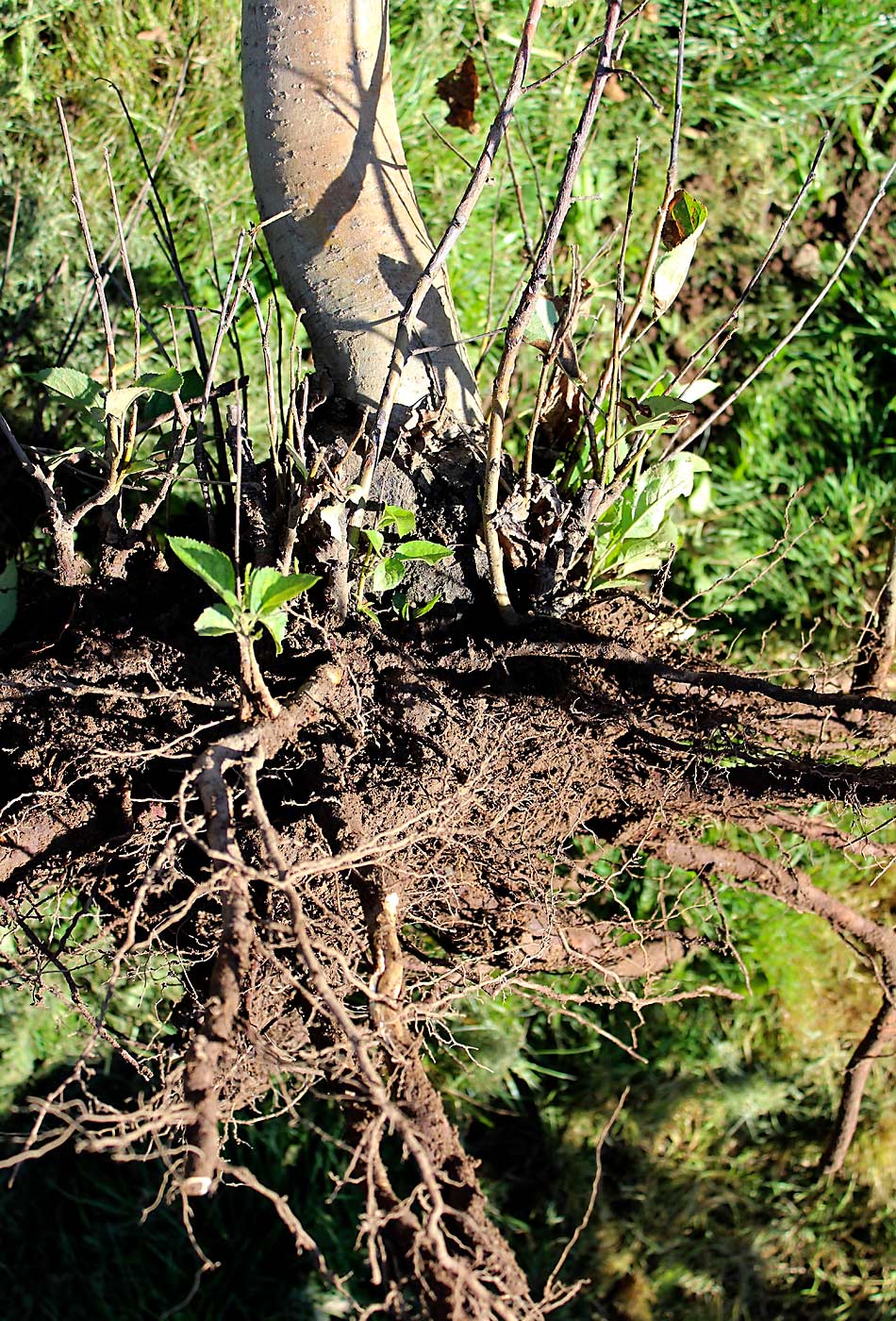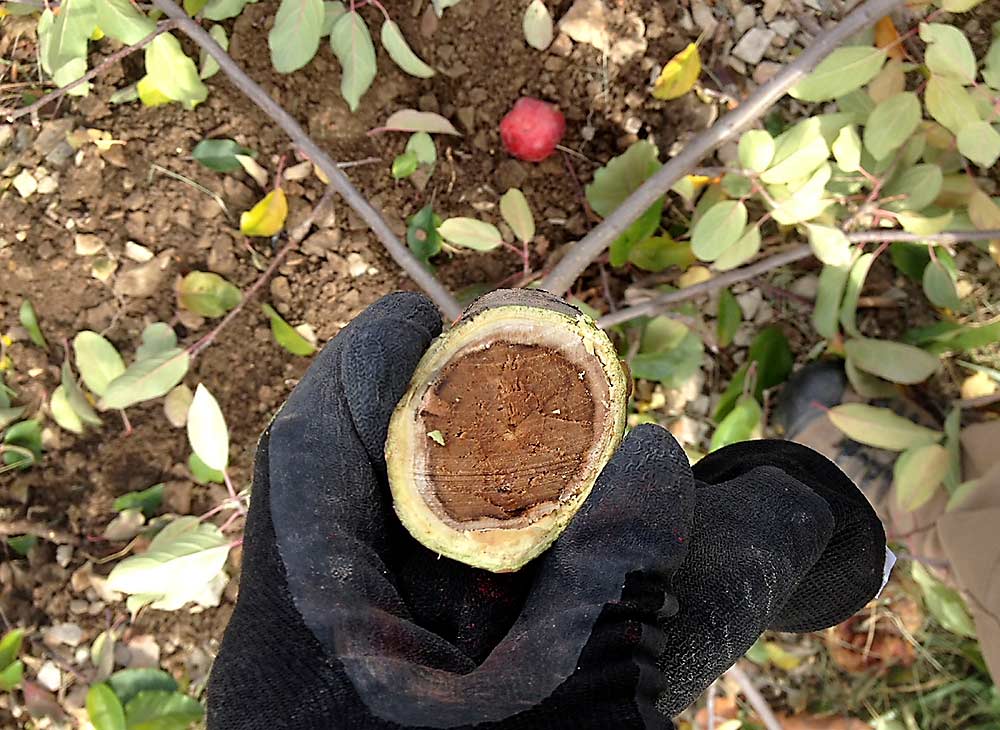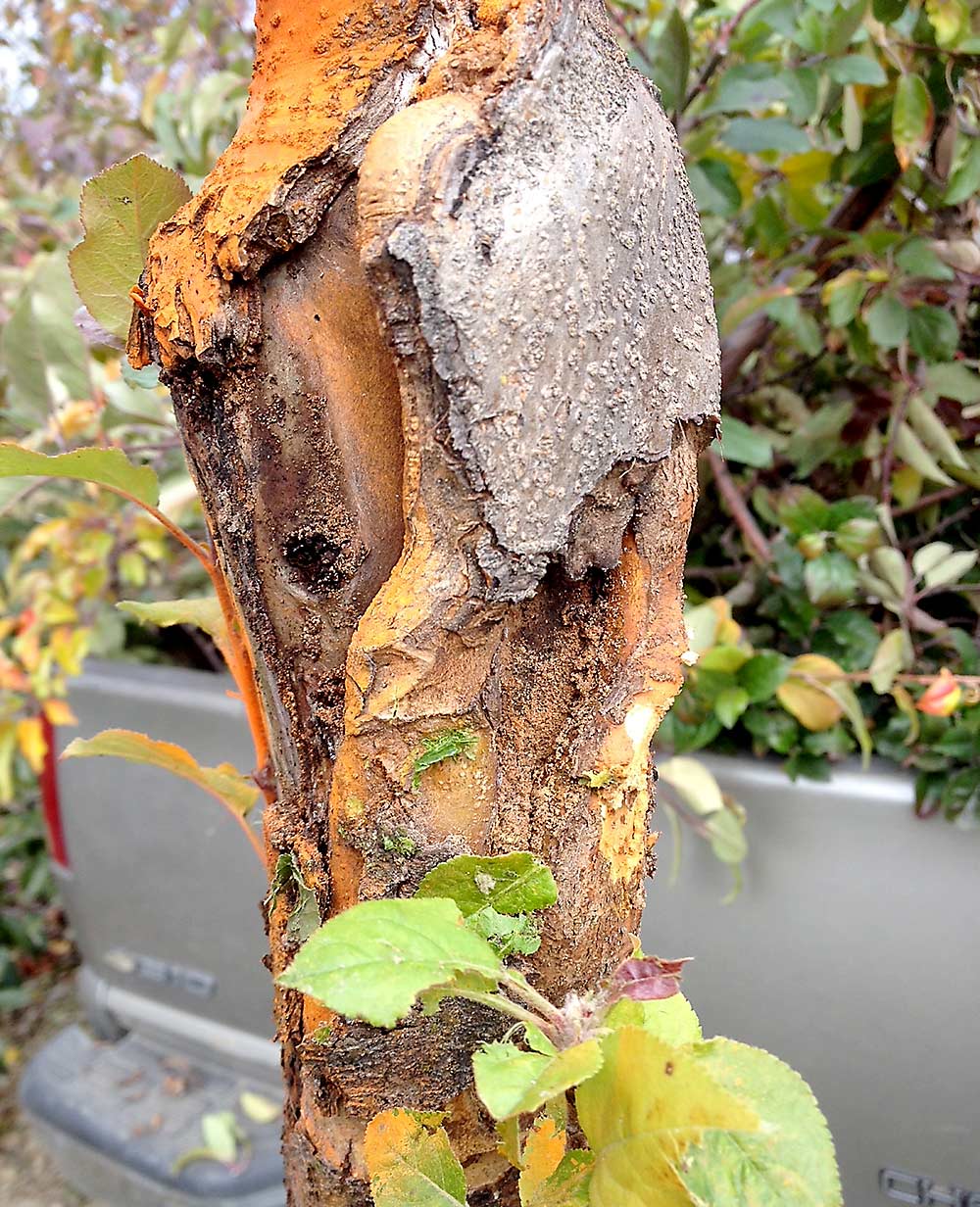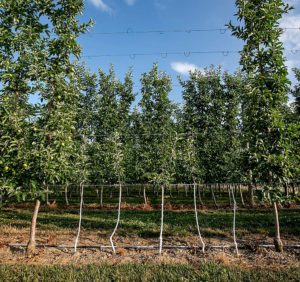
Pulling out a block of trees that has declined and died after putting so much time, effort and expense into it always distresses a grower. But pulling out trees without knowing why they died is especially demoralizing, said Janet van Zoeren, an integrated pest management specialist with Cornell Cooperative Extension.
Growers across Eastern North America have been reporting more incidents of tree decline and death in the past several years, and the cause or causes remain a mystery. Researchers can’t even agree if it’s a new problem or an age-old problem such as winter injury. Those who think it’s a new problem have dubbed it rapid apple decline (RAD). Earlier this year, Cornell University professors Awais Khan and Marc Fuchs, both plant pathologists, received a $299,000 grant from the U.S. Department of Agriculture’s National Institute of Food and Agriculture to study RAD and its causes.
Khan describes rapid apple decline as a “complex phenomenon” that could have many sources, both biotic and abiotic. It’s hard to define with exactitude, because not enough research has been done.
Pennsylvania grower Mark Boyer prefers to call RAD a “syndrome.” He first encountered it in 2013, in a block of Galas planted in 2010 on Malling 9-Nic.29, M.9-337 and regular M.9 rootstocks. He kept fighting for the block and replanting to fill gaps over the years, but ultimately he lost about 17 acres.
Khan first became aware of RAD a few years ago while visiting New York orchards. He aimed to find fire blight, but he noticed more and more growers showing him trees that were declining for unknown reasons. The trees were losing vigor, their leaves changing color and wilting, and the growers couldn’t figure out why. Neither could Khan.
Fuchs had similar experiences in commercial orchards. When he and Khan started studying the declining trees, they concluded the cause was not an individual pathogen. They also noticed that symptoms such as necrotic lesions and wood decay mostly occurred below the graft union, suggesting the rootstock was the source.
Rapid apple decline is a controversial topic. Some researchers have said the cause of decline is simply winter injury in stressed young trees on dwarfing rootstocks, and that RAD is not a real phenomenon. But to Khan there’s not enough “scientifically sound” information to make that sort of diagnosis with any certainty. Apple root systems and the complex ways they interact with the microbes, viruses, nutrients and water in soil are crucial to the health of the tree, but they are not fully understood, he said.
Even van Zoeren, who’s participating in the project, is not quite ready to embrace the term “rapid apple decline.” She’s visited commercial blocks in the Lake Ontario region that have declined suddenly with no distinct cause, but she thinks “RAD” has been used to describe so many symptoms that it confuses more than explains. But if the Cornell project can shed light on the causes of declining blocks, that can only help growers, she said.

RAD has been a challenging topic of discussion with extension educators and nurserymen, many of whom claim winter injury to be the problem, Boyer said. On the other hand, some growers who have experienced tree death want to place the blame on RAD and on infected wood from nurseries, which isn’t always merited.
Boyer said winter injury is one of many factors that can stress trees and therefore exacerbate RAD. Other factors include drier springs and late-season droughts, transplant shock, planting trees on poor sites or on fire blight-prone rootstocks, excessive fertilizer programs, use of glyphosate on dwarf rootstocks, and a lack of virus-free budwood.
Fortunately, whatever RAD is, it doesn’t seem to transmit from tree to tree or block to block, unlike fire blight. Boyer has stopped planting on Malling 9 or Nic rootstocks, stopped spraying glyphosate on all dwarf roots, and now buys multiple rootstocks when placing large tree orders, he said.

Khan said the root cause of rapid apple decline might be more fundamental: a result of foundational shifts in the modern apple industry. One of those shifts is climate change. Another is high-density plantings. Modern orchardists are packing a lot of shallow root systems into smaller and smaller spaces, creating intense competition for water and other nutrients. The combination of potential climate shocks with more intense root competition has not been studied comprehensively.
As part of their project, Khan and Fuchs will compare physical samples of declining and healthy trees from orchards throughout New York state. If they can’t find an obvious cause of decline, such as fire blight or root rot, they’ll test trees for viruses and study their root systems and surrounding soil. They’ll study rootstocks and scions, to see if certain combinations lead to greater decline. They’ll use ground-penetrating radar in declining orchard blocks to make root assessments, Khan said.
The pathologists have planted a research orchard at Cornell AgriTech in Geneva, mimicking a modern commercial planting with multiple rootstocks. They collected virus and other data from the rootstocks before planting and will pull out some of the trees at intervals to study the growth parameters of the root system and virus impacts since planting.
—by Matt Milkovich







Leave A Comment